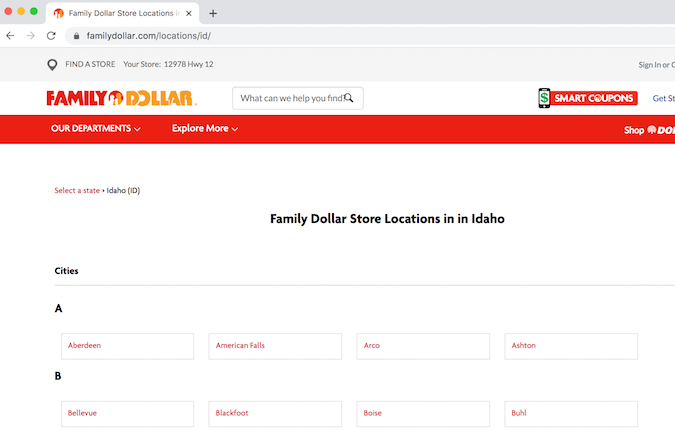Part one of this series focuses on requesting and wrangling HTML using two of the most popular Python libraries for web scraping: requests and BeautifulSoup After the 2016 election I became much more interested in media bias and the manipulation of individuals through advertising. What is Web Scraping? Web scraping is the process of extracting data from the internet. It is also known as web harvesting or web data extraction. Python allows us to perform web scraping using automated techniques. Some of the most commonly used libraries in Python for web scraping are: The requests library. The Beautiful Soup 4 library. In practice, web scraping encompasses any method allowing a programmer to access the content of a website programmatically, and thus, (semi-) automatically. Here are three approaches (i.e. Python libraries) for web scraping which are among the most popular: Sending an HTTP request, ordinarily via Requests, to a webpage and then parsing the HTML (ordinarily using BeautifulSoup) which is returned to access the desired information. Typical Use Case: Standard web scraping. With the help of this course you can Web Scraping and Crawling with Python: Beautiful Soup, Requests & Selenium. This course was created by GoTrained Academy & Waqar Ahmed. It was rated 4.4 out of 5 by approx 5758 ratings. There are approx 77080 users enrolled with this course, so. Web scraping and saving to a file using Python, BeautifulSoup and Requests Posted on July 23, 2017 March 12, 2018 by redshift In this segment you are going to learn how make a python command line program to scrape a website for all its links and save those links to a text file for later processing.
In this segment you are going to learn how make a python command line program to scrape a website for all its links and save those links to a text file for later processing. This program will cover many topics from making HTTP requests, Parsing HTML, using command line arguments and file input and output. First off I’m using Python version 3.6.2 and the BeautifulSoup HTML parsing library and the Requests HTTP library, if you don’t have either then type the following command to have them installed on your environment. So let’s get started.
Now let’s begin writing our script. First let’s import all the modules we will need:
Line 1 is the path to my virtual environment’s python interpreter. On line 2 we are import the sys module so we can access system specific parameters like command line arguments that are passed to the script. Line 3 we import the Requests library for making HTTP requests, and the BeautifulSoup library for parsing HTML. Now let’s move on to code.
Here we will check sys.argv, which is a list that contains the arguments passed to the program. The first element in the argv list(argv[0]) is the name of the program, and anything after is an argument. The program requires a url(argv[1]) and filename(argv[2]). If the arguments are not satisfied then the script will display a usage statement. Now let’s move inside the if block and begin coding the script:
On lines 2-3 we are simply storing the command line arguments in the url and file_name variables for readability. Let’s move on to making the HTTP request.
On line 5, we are printing a message to the user so the user knows the program is working.
On line 6 we using the Requests library to make an HTTP get request using requests.get(url) and storing it in the response variable.
On line 7 we are calling the .raise_for_status() method which will return an HTTPError if the HTTP request returned an unsuccessful status code.
On line 1 we are calling bs4.BeautifulSoup() and storing it in the soup variable. The first argument is the response text which we get using response.text on our response object. The second argument is the html.parser which tells BeautifulSoup we are parsing HTML.
On line 2 we are calling the soup object’s .find_all() method on the soup object to find all the HTML a tags and storing them in the links list.
On line 1 we are opening a file in binary mode for writing(‘wb’) and storing it in the file variable.
On line 2 we are simply providing the user feedback by printing a message.

On line 3 we iterate through the links list which contains the links we grabbed using soup.findall(‘a’) and storing each link object in the link variable.
On line 4 we are getting the a tag’s href attribute by using .get() method on the link object and storing it in the href variable and appending a newline(n) so each link is on its own line.
Web Scraping Beautiful Soup Python

On line 5 we are printing the link to the file. Notice that were calling .encode() on the href variable, remember opened the file for writing in binary mode and therefore we must encode the string as a bytes-like object otherwise you will get a TypeError.
On line 6 we are closing the file with the .close() method and printing a message on line 7 to the user letting them know the processing is done. Now let’s look at the completed program and run it.
Now all you
have to do is type this into the command line:
Output:
Now all you have to do is open up the links file in an editor to verify they were indeed written.
And that’s all there is to it. You have now successfully written a web scraper that saves links to a file on your computer. You can take this concept and easily expand it for all sorts of web data processing.
Python 3 Web Scraping
Further reading: Requests, BeautifulSoup, File I/O
